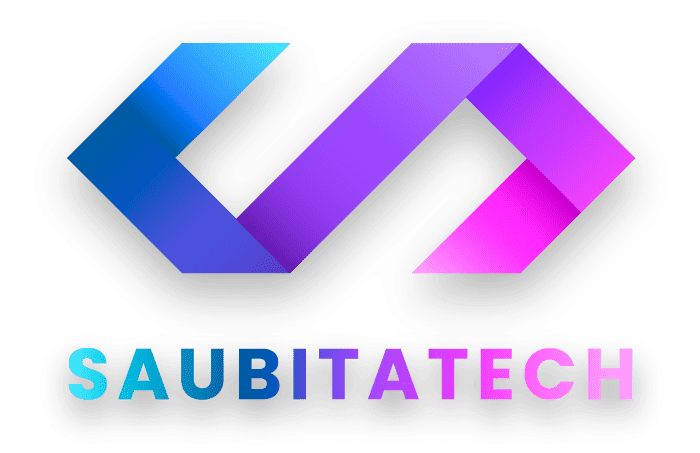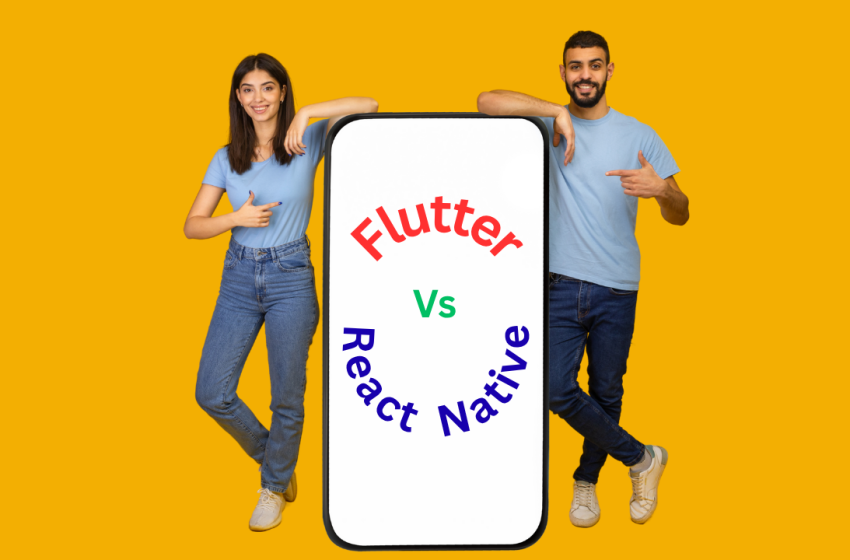Choosing the right mobile app development framework is crucial for creating efficient, high-performance apps that align with your business strategy. Among the most popular frameworks today are Flutter and React Native. Each offers powerful tools and advantages—but how do you know which one suits your project best?
At SaubitaTech, we help startups, SMEs, and enterprises navigate this decision by analyzing business goals, performance needs, and budget constraints. This guide explores Flutter and React Native in depth to help you make the right choice.
What is Flutter?
Flutter is an open-source UI software development kit (SDK) developed by Google. It enables developers to build natively compiled applications for mobile, web, and desktop from a single codebase, using the Dart programming language.
Key Features of Flutter:
- Rich set of pre-designed widgets
- Hot reload for instant UI updates
- Strong performance due to native ARM code
- Excellent UI consistency across platforms
Flutter is best suited for:
- Startups looking to develop beautiful UIs quickly
- Apps with complex UI and custom animations
- Businesses seeking consistent performance across Android and iOS
What is React Native?
React Native is a framework developed by Facebook that allows developers to use JavaScript and React to build cross-platform mobile apps. It renders UI components using native APIs, which means it delivers performance close to native apps.
Key Features of React Native:
- Reusable components
- Large developer community
- Fast refresh for quick development cycles
- Integration with native modules (via bridges)
React Native is ideal for:
- Apps with heavy use of third-party plugins
- Development teams familiar with JavaScript/React
- Projects with tight timelines and moderate complexity
Performance Comparison
Speed and UI Responsiveness:
Flutter generally offers smoother animations and faster UI rendering thanks to its compiled Dart code. React Native may rely on a JavaScript bridge, which can sometimes slow down complex interactions or animations.
Native Functionality Access:
React Native has a broader range of mature third-party plugins for accessing native features. Flutter, however, is catching up fast and is backed by Google’s robust library ecosystem.
App Size:
Flutter apps tend to be larger in size compared to React Native apps, due to the bundling of widgets and libraries. However, ongoing updates are improving this.
Cross-Platform vs. Native Apps: What’s Better in 2025?

Development Speed and Learning Curve
Flutter:
Developers new to Dart may experience a steeper learning curve. However, once learned, Flutter’s structured ecosystem and built-in UI toolkit accelerate development.
React Native:
Faster to pick up for developers familiar with JavaScript. Its vast community and resources also make troubleshooting and problem-solving easier.
UI and Customization
Flutter allows deep UI customization thanks to its widget-based architecture. If your app depends heavily on branding and distinctive UI/UX, Flutter provides the flexibility to craft exactly what you need.
React Native uses native UI components, which makes it slightly more consistent with platform-specific design standards. However, achieving high-end customization might require more integration with native modules.
Ecosystem and Community Support
React Native has been around longer and has a larger developer base and more third-party libraries, tools, and plugins.
Flutter, though younger, has seen rapid growth. Backed by Google, it is continuously improving and gaining significant popularity, especially among new startups and forward-looking developers.
Cost and Budget Considerations
Both frameworks enable faster development and shared codebases, reducing overall cost compared to building separate native apps for Android and iOS.
At SaubitaTech, our mobile app development experts help clients select the right framework to optimize both time-to-market and cost-efficiency. Whether you’re building an MVP or scaling your enterprise app, we tailor solutions to fit your needs.
Explore how our website & application development services integrate with mobile strategies to streamline business operations.
How to Validate Your App Idea Before Development
Use Cases and Real-World Examples
When to Use Flutter:
- You need a consistent UI across platforms.
- Your app is graphics-intensive or uses animations.
- You’re building an MVP with limited resources but high design requirements.
When to Use React Native:
- You already have a team familiar with JavaScript.
- You need strong community support and a large set of plugins.
- Your app requires frequent updates and third-party integrations.
Integration with Business Systems
At SaubitaTech, we don’t just build apps—we ensure they’re integrated with your overall digital strategy, from marketing automation to AI and robotic process automation (RPA).
Whether you’re focused on eCommerce, healthcare, logistics, or education, we evaluate how your mobile app fits into your end-to-end business ecosystem, ensuring your investment pays off.
Also explore our recruitment process outsourcing (RPO) services if you’re scaling a tech team to support mobile initiatives.
Future-Proofing Your App
Technology evolves fast. Choosing a framework that is actively maintained, scalable, and compatible with future innovations is vital.
Both Flutter and React Native are continuously updated and widely adopted. The right choice depends on your specific business case, technical goals, and available resources.
If you’re interested in integrating AI and automation, our team can help align your app with broader digital transformation initiatives. Learn more about AI and RPA at SaubitaTech.
Consulting and Development with SaubitaTech
Choosing between Flutter and React Native is a strategic decision. At SaubitaTech, we offer consultation, prototype development, and end-to-end mobile solutions tailored to your objectives.
Whether you’re a startup building your first app or an enterprise expanding into mobile, our team will guide you through the process—from tech stack selection to post-launch support.
Ready to talk? Contact our experts to discuss your mobile app needs.
Conclusion
Both Flutter and React Native are excellent choices for cross-platform mobile development. The decision ultimately depends on your project’s specific requirements, available resources, and desired user experience.
Choose Flutter if:
- You want pixel-perfect UIs
- You value performance and animation
- You prefer a tightly integrated toolkit
Choose React Native if:
- You already use JavaScript
- You need extensive third-party libraries
- You want a native-like look with platform-specific elements
With the right guidance, either framework can power exceptional mobile apps. At SaubitaTech, we’re here to help you make the right choice and build an app that delivers real business value.







